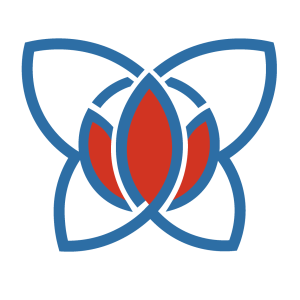■ Tool: PERSONA CANVAS

Personas are fictional characters, which you create based on your research to represent the different participant types that might be already a part of your network or can join it in the future. Creating personas will help you understand your members’ needs, experiences, behaviours and goals. Creating personas can help you step out of yourself. It can help you recognize that different people have different needs and expectations, and it can also help you identify with the groups you’re designing for. Personas make the design task at hand less complex, they guide your ideation processes, and they can help you to achieve the goal of creating a good experience for your actual or potential network members.
Personas are distilled essences of real users
Persona Canvas(PC) are a fundamentally important part of Design Thinking methodology and User Experience (UX) design, which makes it very appealing to apply in learning about your – future or existing - network. PCs are popular tools in the design of solutions to challenges when we need to KNOW THE PEOPLE we want to work with or for. PC can be very helpful in the design process by directing solutions towards collaborators, shaping the view of information and thus supporting decision-making.
¤ Designing the membership strategy, benefits and policy
¤ Envisioning the possible future members of our network
¤ Designing the activities dedicated to members, and the network's audience
¤ Designing the process of getting new members to the network
DURATION (min/max): 45 min – 1:30 h
MATERIALS/REQUIREMENTS
Persona template, a big sheet of paper, and a few colourful pencils/pens. You might need to interview the participants or have access to the data concerning their needs and functioning context.
STEPS
- Collect data. Collect as much knowledge about the members as possible. Perform high-quality user research of actual members and organizations in your target user group. In Design Thinking, the research phase is the first phase, also known as the Empathise phase.
- Form a hypothesis. Based upon your initial research, you will form a general idea of the various participants within the focus area of the project, including the ways participants differ from one another – For instance, you can use Affinity Diagrams and Empathy Maps.
- Everyone in your team accepts the hypothesis. The goal is to support or reject the first hypothesis about the differences between the participants. You can do this by confronting our network members with the hypothesis and comparing it to existing knowledge.
- Establish a number. You will decide upon the final number of personas, which it makes sense to create. Most often, you would want to create more than one persona, but you should always choose just one persona as your primary focus.
- Describe the personas. The purpose of working with personas is to be able to develop solutions, strategies and goals based on the needs and goals of your collaborators. Be sure to describe personas in such a way as to express enough understanding and empathy to understand the participants. You should include details about their education, lifestyle, interests, values, goals, needs, limitations, desires, attitudes, and patterns of behaviour.
- Add a few fictional personal details to make the persona a realistic character.
- Give each of your personas a name.
- Create 1–2 pages of descriptions for each persona.
- Prepare situations or scenarios for your personas. This engaging persona method is directed at creating scenarios that describe solutions. For this purpose, you should describe a number of specific situations that could trigger the reactions. In other words, situations are the basis of a scenario. You can give each of your personas life by creating scenarios that feature them in the role of a participant. Scenarios usually start by placing the persona in a specific context with a problem they want to or have to solve.
- Obtain acceptance from the organization. It is a common thread throughout all 10 steps that the goal of the method is to involve the team you work with. As such, as many team members as possible should participate in the development of the personas, and it is important to obtain the acceptance and recognition of the team in the various steps. In order to achieve this, you can choose between two strategies: You can ask your folks for their opinions, or you can let them participate actively in the process.
- Disseminate knowledge. In order for the participants to use the method, the persona descriptions should be disseminated to all. It is important to decide early on how you want to disseminate this knowledge to those who have not participated directly in the process, to future new employees, and to possible external partners. The dissemination of knowledge also includes how the project participants will be given access to the underlying data.
- Everyone prepares scenarios. Personas have no value in themselves. Until the persona becomes part of a scenario – the story about how the persona is involved in the network– it does not have real value.
- Make ongoing adjustments. The last step is the future life of the persona descriptions. You should revise the descriptions on a regular basis. New information and new aspects may affect the descriptions. Sometimes you would need to rewrite the existing persona descriptions, add new personas, or eliminate outdated personas.
WEBSITE for additional information
https://www.interaction-design.org/literature/topics/personas
